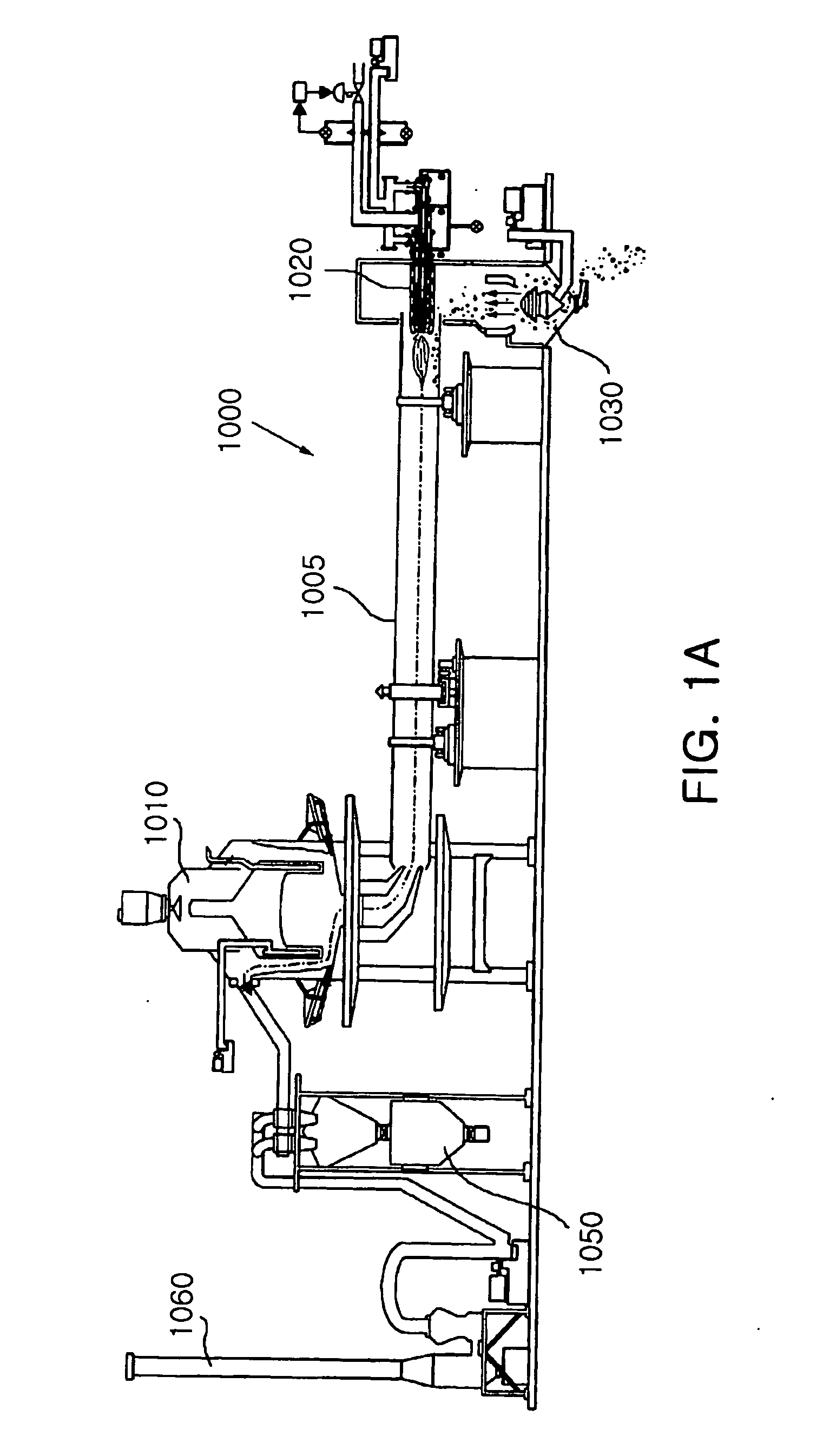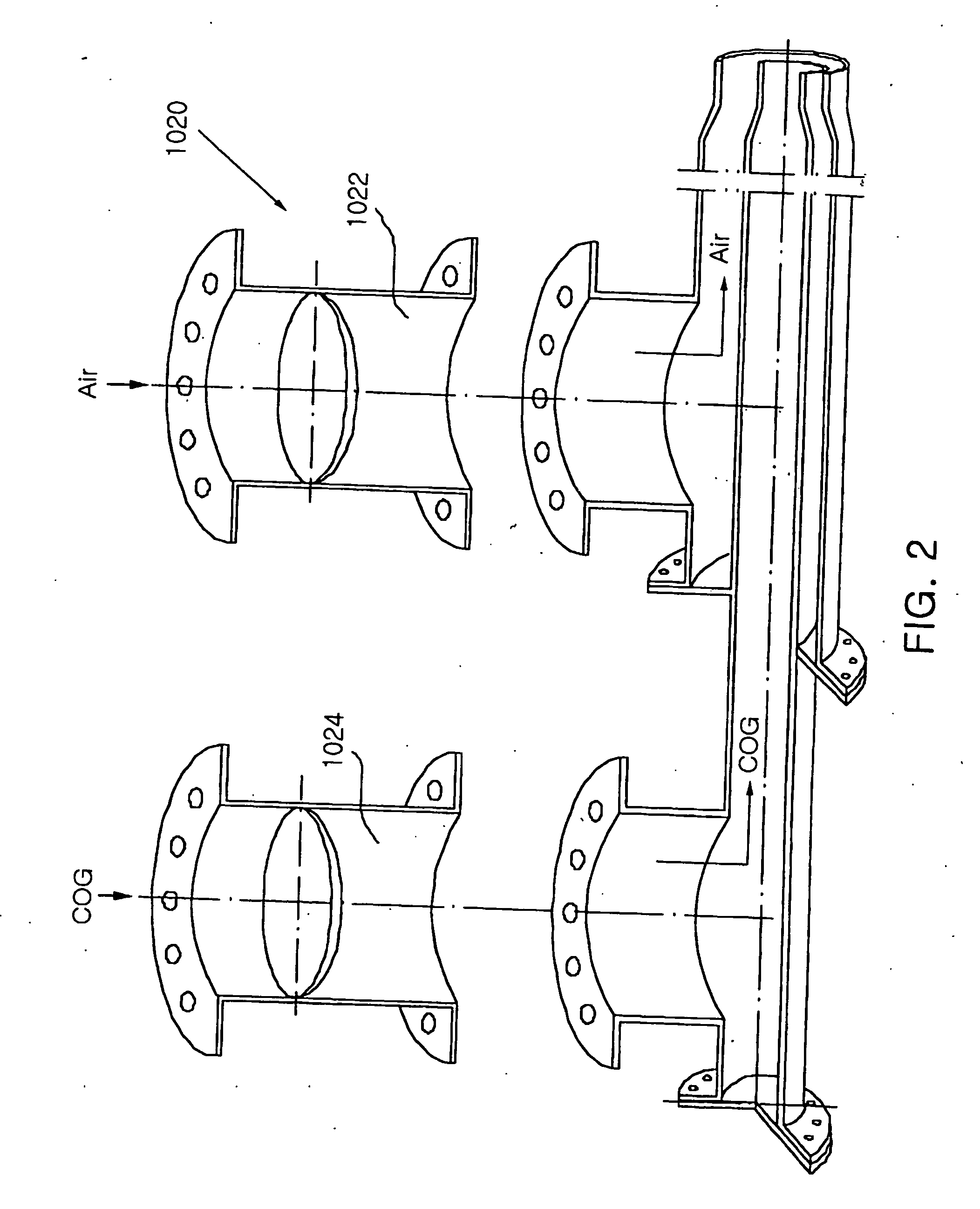Method and burner apparatus for injecting a pulverized coal into rotary kilns, method and apparatus for producing cao using them
a burner apparatus and rotary kiln technology, applied in the direction of other chemical processes, furnaces, combustion types, etc., can solve the problems of excessive sox emission concentration, high emissions of lime, and high emissions of sox, so as to achieve low emissions of nox and sox and achieve high quality products.
- Summary
- Abstract
- Description
- Claims
- Application Information
AI Technical Summary
Benefits of technology
Problems solved by technology
Method used
Image
Examples
example 1
[0371] A number of experiments were performed in order to verify the operation effect of the invention.
[0372] Commercial operations were performed to produce quick lime in the rotary kiln 105 which outputs quick lime 315 to 320 ton per day according to the first embodiment of the pulverized coal-injecting method according to the invention.
[0373] In this experimental examples, the commercial operations were performed with COG containing 50% and pulverized coal replacing 50% of the total heat quantity that is inputted into calcination to produce high quality quick lime as reported from D and E of Table in FIG. 3A, and results are reported from Table in FIG. 6B.
[0374] According to the results of this experimental example, when pulverized coal was used at 30% or less of the total heat quantity, it showed excellent results in NOx and SOx emission and the emission concentration of dust was increased for 0.4 to 0.6 times originated from residual ash. When pulverized coal was used at 35%...
example 2
[0375] For the first embodiment of the pulverized coal-injecting method according to the invention, comparison experiment was performed in the rotary kiln 105 using fuel contents as reported from Table in FIG. 35A, in which COG 100% was used in conventional examples but COG 70% and pulverized coal 30% were used with respect to the total heat quantity of the burner 10 in inventive examples.
[0376] When high quality quick lime having hydration levels of 96.6 to 97.5% was produced in this experiment, the conventional examples generated NOx at 2.0 to 2.3 or increased for about 200% and SOx at 1.3 to 1.4 or increased for about 35% causing heavy environment pollution compared to production of common quick lime having hydration levels of 92.0%.
[0377] However, when pulverized coal was used for 30% as in the inventive examples, dust was increased at 1.5 to 1.6 times according to the effect of residual ash, whereas NOx was generated at 0.52 to 0.54 or decreased for 50% and SOx was generated ...
example 3
[0380] For the first embodiment of the quick lime-producing method according to the invention, commercial operations were performed in the rotary kiln 105 which produces 315 to 320 ton per day while maintaining hydration levels of 96.5 to 94.5%, and results are reported from Table in FIG. 35B.
[0381] When only COG was used as in conventional examples, the kiln 105 maintained the maximum inside temperatures of 1250 to 1300° C., the minimum inside temperatures of 710 to 750° C. and temperature ranges at 1000° C. or more for 48 to 52% that have direct influence on calcination while producing 315 to 320 ton per day. When operations were performed by adding pulverized coal for 30% as in the inventive examples, the kiln 105 maintained the maximum temperatures of 1360 to 1400° C., the minimum temperatures of 800 to 850° C. and temperature ranges at 1000% or more for 74 to 77% that have direct influence on calcination while producing 346 to 350 ton per day. Regarding the experiment results,...
PUM
| Property | Measurement | Unit |
|---|---|---|
| particle size | aaaaa | aaaaa |
| particle size | aaaaa | aaaaa |
| temperature | aaaaa | aaaaa |
Abstract
Description
Claims
Application Information
 Login to View More
Login to View More - R&D
- Intellectual Property
- Life Sciences
- Materials
- Tech Scout
- Unparalleled Data Quality
- Higher Quality Content
- 60% Fewer Hallucinations
Browse by: Latest US Patents, China's latest patents, Technical Efficacy Thesaurus, Application Domain, Technology Topic, Popular Technical Reports.
© 2025 PatSnap. All rights reserved.Legal|Privacy policy|Modern Slavery Act Transparency Statement|Sitemap|About US| Contact US: help@patsnap.com



